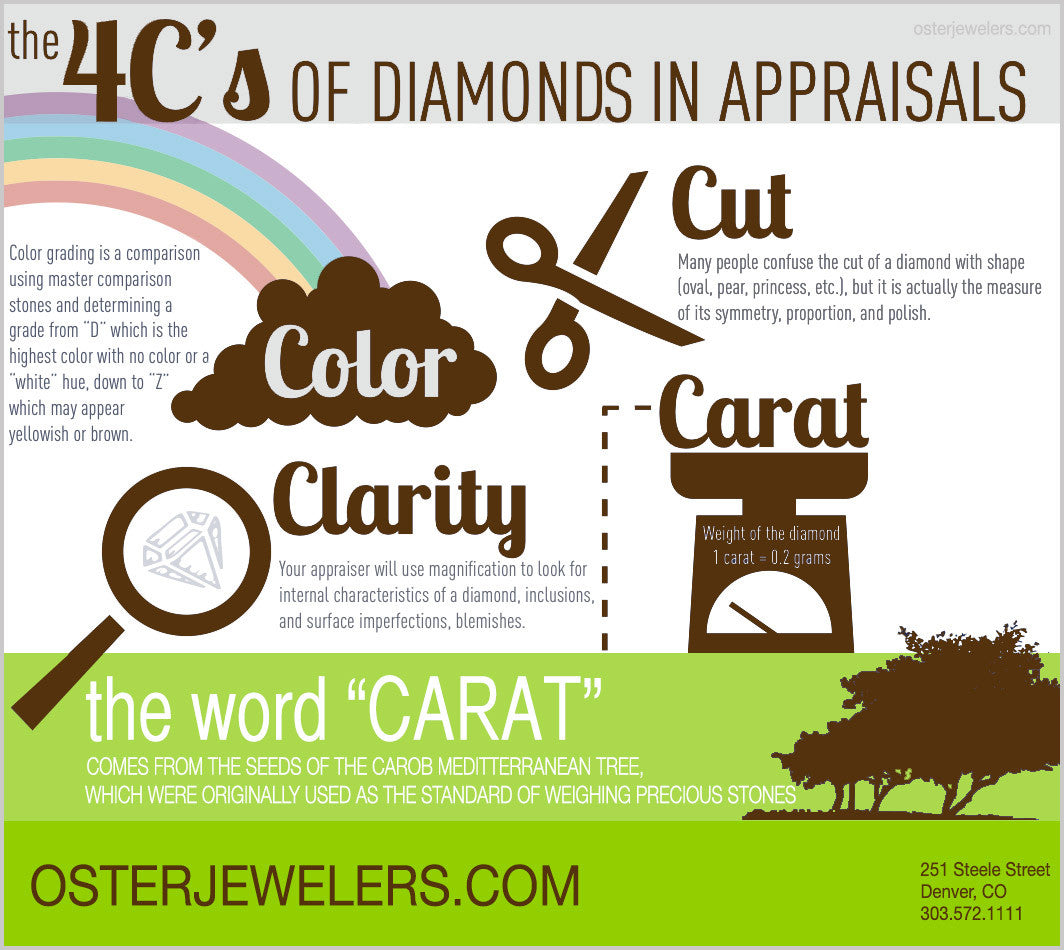
The 4 C's of Diamonds
There is Nothing Quite Like a Diamond.From deep inside the earth comes a cherished object of adornment that is the hardest natural substance with the world’s best conductor of heat- five times more effective than the next best - silver. It is found in the most remote places on earth and takes about one ton of rock to recover less than half a carat of rough, making it the rarest and most desired gemstone in the world. No wonder it’s a symbol of commitment, longevity and love. |
|
 |
|
Diamond EducationUnderstanding the 4 C's - cut | clarity | color | carat weight - is paramount in getting the best quality diamond for the best price, but remember that no one attribute is important over another one in the appearance and quality of the stone. They all work in tandem to give your diamond quality, beauty rarity and price. The diamonds with the highest combination 4C ratings are rarer and therefore more expensive. |
|
CutCut is crucial to the brilliance (white light reflecting off of the surface), fire (color emitted from a diamond) and scintillation (flashes of light you see when the diamond is moved) of the diamond. A beautifully cut diamond radiates all three. Cut can affect up to 50% of the value of the diamond. Diamonds that are cut too deep or too shallow loose light through the sides and/or bottom. These will be less brilliant and ultimately less valuable. Don't confuse cut with the shape of diamonds. Shape refers to what shape the diamond is. See Diamond Shapes for more information. |
|
ColorThe absence of color is what gives a white diamond its value. Truly colorless diamonds are very rare and most diamonds used are nearly colorless with tints of yellow or brown. “Fancy” diamonds are valued for their color such as yellow, pink and green diamonds which will be discussed later. The less yellow or brown in a white diamond, the higher the value and higher the price. The GIA grading scale for color in white diamonds is D-Z. |
|
|
 |
ClarityDiamonds are like snowflakes: no two are alike. Diamonds are created and mined under great amounts of heat and pressure, so it’s extremely rare to find a diamond that has no internal inclusions and external characteristics. On the bright side, these imperfections help identify your stone from many others and help gemologists separate natural stones from synthetics. Diamonds are graded from flawless to imperfect. |
|
Carat WeightSize is a predominant factor in determine the price of your diamond. The price of a diamond will rise proportionately to the size of the stone. Carat is the term used to describe the weight of the diamond. The abbreviation 'ct' is used to describe the weight of a single carat. The abbreviation 'stw' is written to describe the total weight of all the diamonds in a piece of jewelry. Diamonds are weighed when loose or unmounted. One carat equals 200 milligrams in weight. Diamonds under a carat are further divided into points. Point example: a 0.25 carat diamond equals twenty-five points--or one quarter of a carat. |
|

